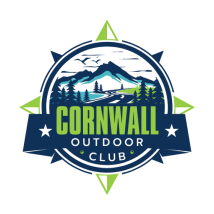Nature’s Play
By Sylvie O’Rourke I am hiking at Landons Bay in the Thousand Islands National Park. I know there will be much to see here. There always is. Those in our group who have never been here are in for a treat. Let the show begin! Act One begins as we set foot on the trail. Two of us are distracted by a strident “churr” sound followed by a flutter of wings. My companion, an experienced birder and wildlife photographer, quickly points to a Red-Bellied Woodpecker. Excited to witness something new, I strain to locate it amidst the branches of the nearby trees. As soon as I spot it, it flies to another tree, where I must search for it again. I grab my camera, trying to zoom in on the zebra-backed redheaded bird that refuses to stay still, but only manage to get a partial view before it takes off again. Its name appears to be a misnomer as its belly is not at all red, but a barely distinguishable pinkish hue. “Churr! Churr!” How about that? There are two of them! We must increase our pace to catch up with the others who have disappeared down the trail. We find them waiting for us around a bend. The trail is covered in autumn’s decaying leaves, the forest itself adorned with protruding limestones partially covered with moss, and the occasional pop of delicate purple wildflowers known as Liverleaves. It is too soon for trilliums, but it won’t be long before they grace the woodland. We take the trail to the lookout. From that nosebleed section, I expect to see swans in the bay because I have seen them there on past occasions, but I am not prepared for the massive flock of Mute Swans dotting the water below me. This ensemble creates the perfect backdrop for the main performance, which is about to start. The protagonists in this play are a duo of Ospreys. We watch them soaring in opposite directions, circling above the bay. Suddenly, one swoops down, almost skimming the water’s surface, and then quickly regains altitude. Perhaps it is dissatisfied with its lunch prospects. The second one, deciding to test its luck, dives diagonally, twisting midair to plunge into the water talons first. Within seconds, it emerges, flapping its wings while grasping a doomed fish between its talons. We watch in awe as it flies off with its prize. A playwright couldn’t dream up a better climax for the second act. Reluctantly, we leave our priceless front row seats and head back to the main trail, which follows the bay’s shore. A boardwalk hugs the rockface to rejoin the trail on the other side. From here we have a vantage point for viewing the swans. In the tall grass on the bank, I see what appears to be a nesting area for future cygnets. A loud commotion diverts my attention: A fight is breaking out – two males trying to win over a female. It is mating season, and the competition is stiff. The loser swims away, its feathers ruffled, as the curtain lowers on the final act. it is well past noon, and we are getting hungry. We take a shorter, more direct route back to the parking lot. Along the way, educational signboards describe the meaning of cavity trees and canopy gaps. We come across an old chicken house from the land’s previous farm days and a directional sign announcing the presence of a beaver dam and an osprey nest. At first glance, the nest appears unoccupied. The male Osprey is detected in a nearby tree. It soon flies off to its nest, where the female emerges from her concealed position to greet him. It is a beautiful photographic opportunity. Perhaps this is an encore performance to conclude our shared experience. Immersive plays of nature are exceptionally rewarding, their storylines unpredictable and suspenseful. The natural world’s continual evolution and the complex interaction of its animal kingdom are bursting with impromptu acts waiting to be interpreted on the stage of life. I, for one, can’t wait for the next performance. Bravo! SDG & A Cornwall Seeker, www.theseeker.ca, June 2025, page 10
